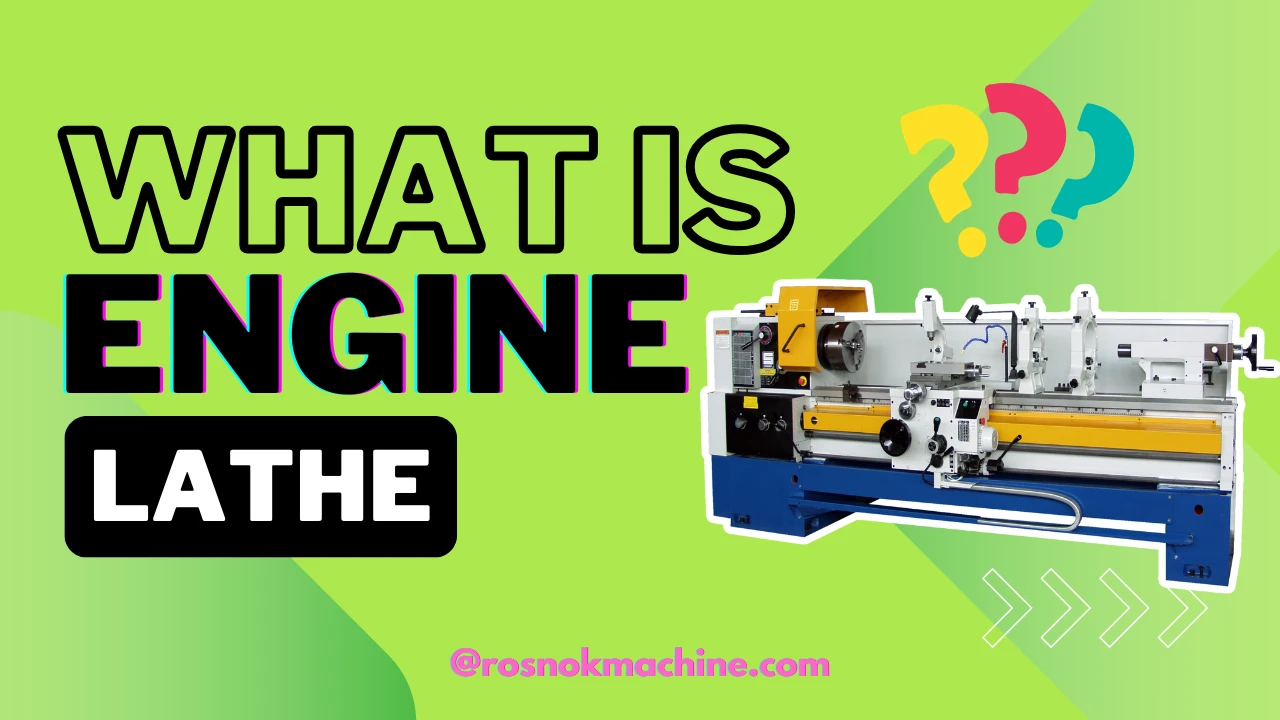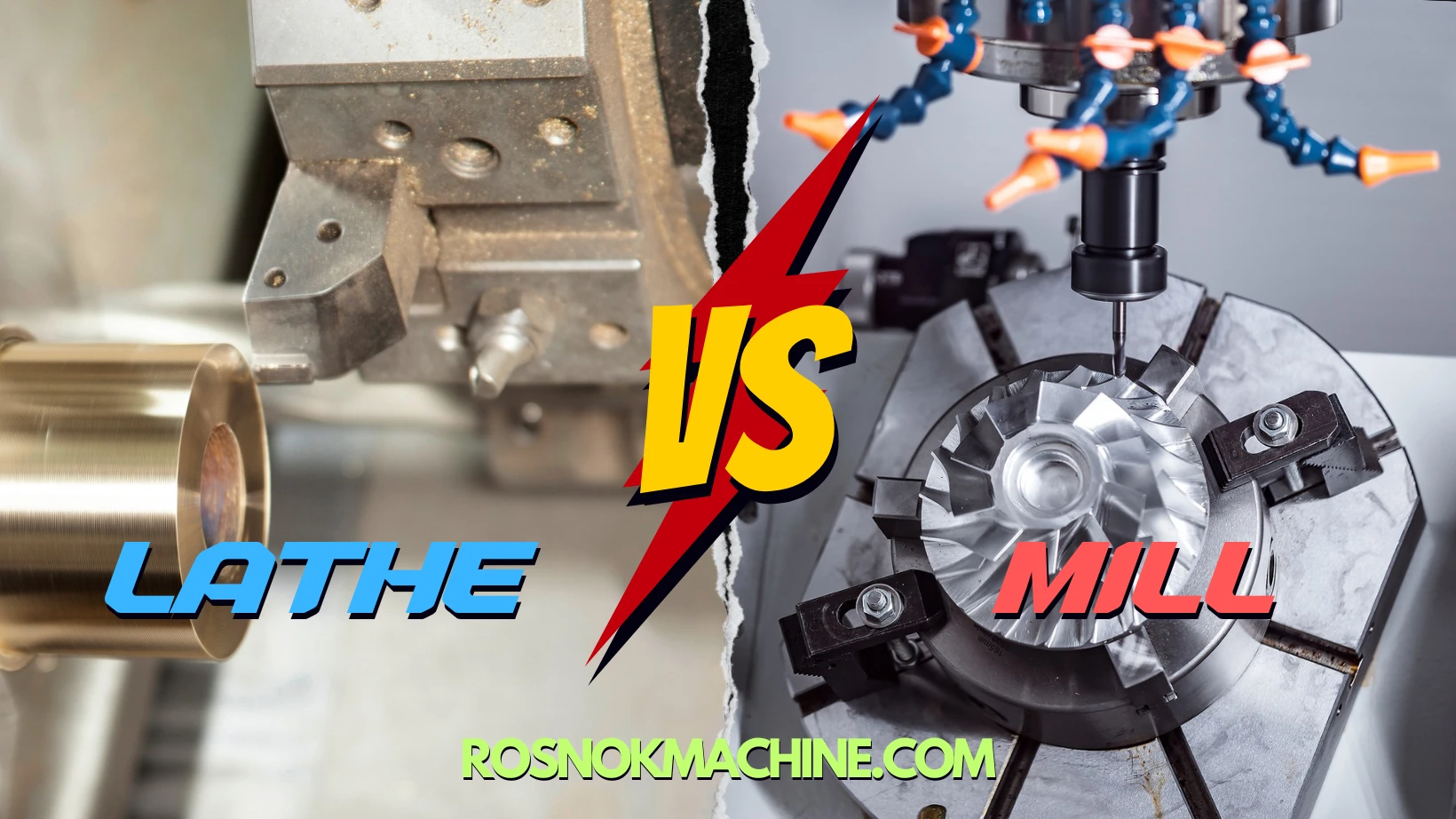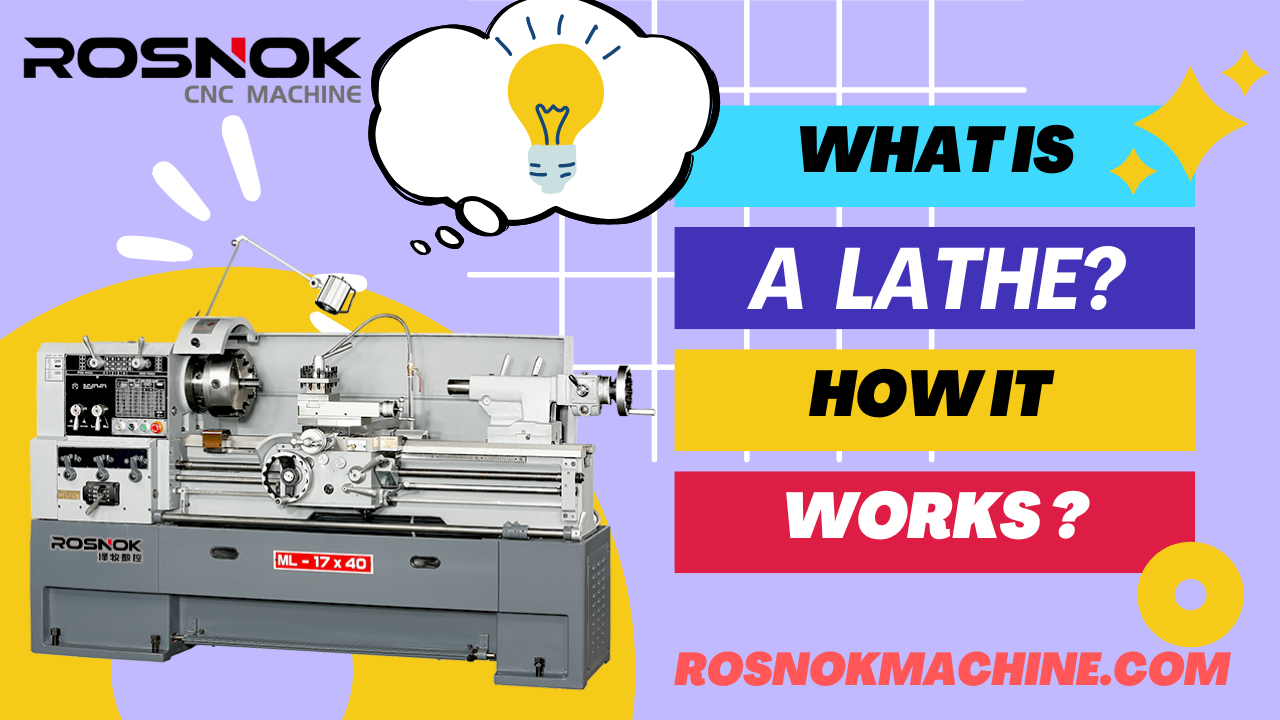Do you want to understand what is an engine lathe and why it remains vital in modern machining? What are its core components, and how do they function together? How does it achieve such precision in operation? What machining processes can it perform? In what industries and scenarios is it commonly used?
The term “engine lathe” dates back to the Industrial Revolution, when the word “engine” meant any complex mechanical device—not just internal combustion engines. Unlike earlier lathes with only hand-held tools, engine lathes featured powered spindles and sliding carriages, making them true machines in their own right. Today, the term refers to traditional horizontal lathes with mechanical feed systems, capable of precise metal cutting, boring, facing, and threading—found in everything from repair shops to industrial production.
Continue reading to learn about the engine lathe’s structure, working principles, machining operations, and real-world applications—everything you need to master this essential machine tool from the inside out.
What Is an Engine Lathe?
An engine lathe is a manually operated, horizontal metal cutting machine tool designed primarily for turning cylindrical parts with high precision. Unlike earlier foot-powered lathes, the engine lathe—first defined during the Industrial Revolution—featured powered spindles, sliding carriages, and mechanical feed systems, transforming it into one of the earliest true “machines” capable of automated tool control. The term “engine” in this context originally referred to a mechanical apparatus, not an internal combustion device, reflecting its historical role as a powered mechanism rather than a simple hand tool. Today, the term “engine lathe” typically refers to a general-purpose, horizontal metal cutting lathe equipped with mechanical feed systems such as lead screws and feed rods—commonly belt- or gear-driven, and still widely used in workshops, repair shops, and training environments. It remains a foundational tool for learning metal turning operations such as facing, boring, threading, and drilling, offering unmatched tactile control and mechanical transparency in an age dominated by CNC automation.

The Origins of the Term “Engine Lathe”
To fully grasp what an engine lathe is, we need to understand where the term itself comes from. This section explores how the evolution from hand-powered tools to mechanically driven machines during the Industrial Revolution gave birth to the engine lathe—and how the meaning of the word “engine” has shifted over time.
From Hand Tools to Powered Machines
Before the Industrial Revolution, lathes were basic, manually operated tools—typically powered by foot pedals, hand cranks, or bowstrings. These early machines required the operator to control both rotation and cutting manually, which limited precision and productivity. But everything changed in the late 18th and early 19th centuries when industrial workshops began to mechanize.
The engine lathe emerged during this pivotal period. It was one of the first lathes to incorporate a powered spindle, a lead screw, and a sliding carriage—three innovations that marked the transition from hand tools to true machines. These features enabled consistent feed motion, accurate tool positioning, and automated turning cycles. Instead of relying on human coordination alone, operators could now use gears and feed mechanisms to produce repeatable results across multiple parts.
This mechanization made the engine lathe not just a tool, but a machine tool—capable of doing real industrial work with metal. Unlike earlier wooden lathes used by craftsmen and carpenters, the engine lathe was built to handle metal parts with higher torque, greater rigidity, and tighter tolerances. It became the foundation of modern machining and set the standard for nearly every lathe design that followed.
Why “Engine” Doesn’t Mean Engine
In today’s usage, the word “engine” often refers to an internal combustion system—like the motor in a car or generator. But when the term “engine lathe” was coined during the Industrial Revolution, “engine” simply meant a machine or mechanical device capable of performing work. It was a general term for complex mechanisms, not limited to propulsion.
At that time, the word was commonly used to describe devices that incorporated power and mechanical coordination—hence, the lathe that introduced motorized rotation, sliding carriages, and automatic feed systems was naturally called an “engine lathe.” It marked a turning point: lathes were no longer hand-cranked or foot-driven tools, but true powered machines capable of repetitive, accurate cutting tasks.
This naming convention stuck, even though the lathe had nothing to do with engines as we know them today. The term survives as a historical reminder of when turning technology first became industrialized. Understanding this background helps clarify the role engine lathes played in transitioning machining from manual skill to mechanical precision.
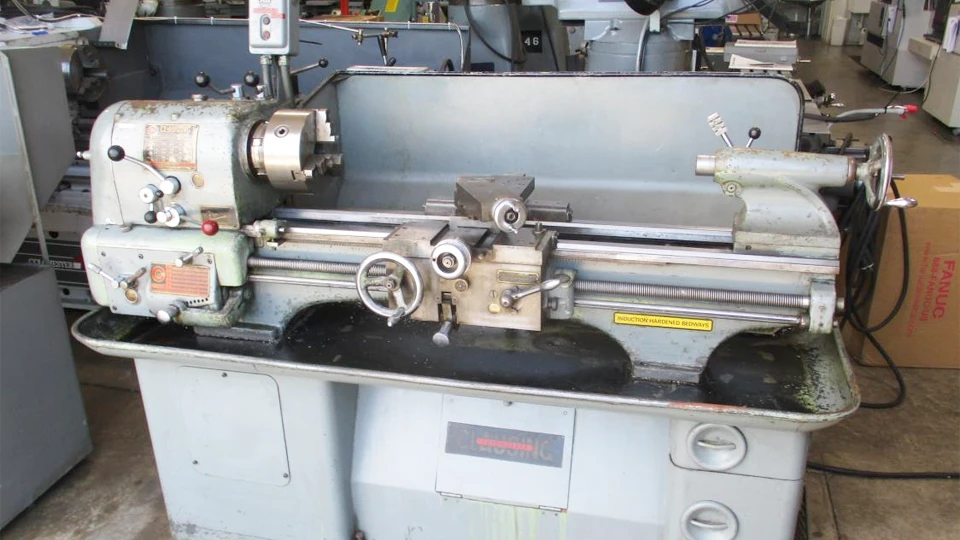
Main Components of an Engine Lathe
Before mastering how an engine lathe works, it’s essential to understand its core structure. Each part—from the frame to the moving assemblies—plays a critical role in supporting precision, rigidity, and cutting performance. In this section, we’ll examine the primary mechanical components that make the engine lathe a foundational machine in manual turning.
Bed, Headstock, and Tailstock
The bed is the base of the engine lathe—a heavy, rigid platform made of cast iron that ensures structural stability and absorbs cutting vibrations. It provides a precisely machined guideway along which other components move, maintaining consistent alignment and accuracy during operations.
Mounted at one end of the bed is the headstock, which houses the spindle and power transmission mechanisms (belt drive or geared). The spindle rotates the workpiece at variable speeds, and its alignment is critical for precise turning. Inside the headstock, you’ll also find gear systems that enable different spindle speeds, allowing operators to adjust cutting conditions depending on the material and tooling.
At the opposite end sits the tailstock. Its primary role is to support long workpieces by holding a center or drilling tool. It can slide along the bed and be locked into position to provide axial support during operations like drilling or turning slender shafts. Together, these three components—bed, headstock, and tailstock—form the physical backbone of the engine lathe, creating a solid, aligned, and adjustable setup for accurate metal cutting.
Carriage and Cross Slide Assembly
The carriage rides along the bed’s guideways and serves as the main platform for holding and moving the cutting tool. It includes several sub-parts: the saddle, apron, cross slide, compound rest, and tool post. Each has a unique function but works together as one unit.
The cross slide, mounted atop the saddle, enables precise movement of the tool perpendicular to the workpiece axis—essential for facing and grooving operations. Above the cross slide is the compound rest, which can be swiveled to perform angled cuts. The tool post securely holds the cutting tool and can rotate for quick tool changes.
Operators can manually move the carriage via handwheels or engage the feed mechanism for powered, consistent motion. This flexibility allows for both intricate manual control and smooth, repeatable cuts—one of the defining features of the engine lathe.
Lead Screw and Feed Rod
Two long rods typically run parallel to the bed: the lead screw and the feed rod. Though they look similar, their purposes are different and often misunderstood by beginners.
The lead screw is a precisely threaded rod used for thread cutting. When engaged, it synchronizes the rotation of the spindle with the linear movement of the carriage, allowing the cutting tool to follow a helical path—essential for producing threads with exact pitch and lead.
In contrast, the feed rod drives the carriage or cross slide for regular turning operations. It transfers rotary motion from the headstock to the apron via a system of gears and clutches, enabling automated feed without engaging the lead screw.
The presence of both a lead screw and a feed rod is what historically elevated the engine lathe beyond hand-operated lathes—allowing for accurate, automated movement and distinguishing it as a true machine tool. Their roles reflect the lathe’s transformation from a manual craft to a mechanical process rooted in engineering precision.
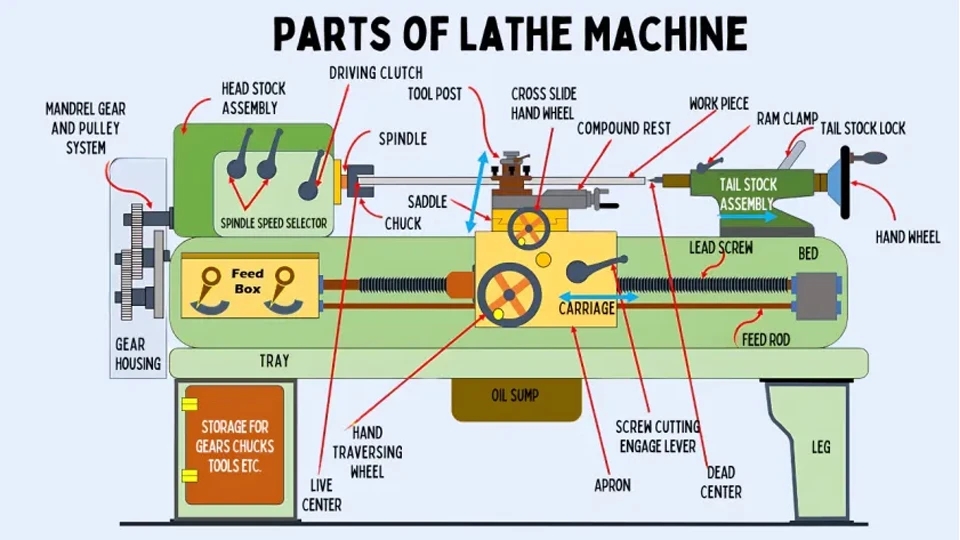
How an Engine Lathe Works
Understanding how an engine lathe functions begins with one simple principle: the workpiece rotates, and the cutting tool moves in a controlled path to remove material. This is the core of the turning process.
The Turning Process Explained
In an engine lathe, the spindle holds and spins the workpiece at a chosen speed, while the cutting tool—held securely in the tool post—is fed along or across the axis of rotation. This coordinated movement between spinning and feeding removes metal in a continuous and predictable manner. When the tool moves parallel to the axis, it reduces the diameter of the workpiece—a process called longitudinal turning. When it moves perpendicular, it flattens the face of the part—known as facing.
The amount of material removed depends on the feed rate (how fast the tool moves), the depth of cut, and the spindle speed (measured in RPM). Operators can adjust each of these variables to achieve desired surface finishes, dimensions, or material removal rates. This interaction between rotating motion and linear feed is what makes the engine lathe a fundamental platform for teaching and practicing traditional turning techniques. The simplicity of this concept allows beginners to quickly grasp the basics, while the mechanical precision enables experienced machinists to execute highly accurate cuts.
Manual vs. Power Feed
Engine lathes are equipped with both manual and automatic feed systems, giving operators flexibility depending on the job. Manual feed means the operator turns handwheels to move the carriage or cross slide, which allows for maximum control. This is useful when making fine adjustments, finishing cuts, or working on complex contours that require a personal touch.
Power feed, on the other hand, engages the lathe’s internal drive system—transmitting rotary motion from the feed rod to the carriage or cross slide via a set of gears. This ensures consistent feed rates, which is essential for uniform surface finishes, long cuts, or repetitive passes. It’s especially useful in roughing operations or when cutting threads using the lead screw, where precise synchronization with spindle rotation is required.
The ability to switch between manual and power feed is one reason the engine lathe is considered a truly versatile tool. Whether you’re working on a single prototype, training new machinists, or performing general-purpose machining, this dual-mode operation supports a wide range of use cases. It’s also what sets the engine lathe apart from simpler, manually limited lathes—and makes it a key tool in both education and industrial repair environments.
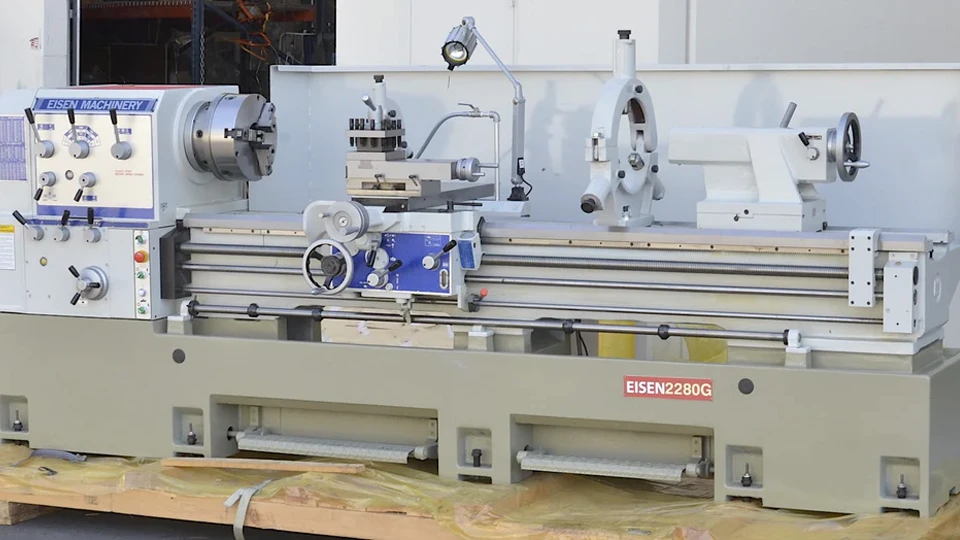
Common Machining Operations on an Engine Lathe
Before diving into specific techniques, it’s important to understand the range of operations an engine lathe can perform. From basic facing and turning to more specialized tasks like thread cutting and reaming, these processes make the engine lathe a highly versatile tool for manual machining. Each operation relies on precise coordination between the rotating spindle and the linear feed system—giving machinists full control over shape, finish, and dimensional accuracy.
Facing, Turning, and Boring
These three operations—facing, turning, and boring—form the backbone of manual turning. Facing is typically the first step, where the cutting tool moves perpendicularly across the end of the rotating workpiece to create a smooth, flat surface. It’s essential for squaring the ends of raw stock before further machining. Turning, by contrast, involves feeding the tool parallel to the workpiece axis to reduce its diameter or shape an external contour. The depth of cut and feed rate are adjusted based on material type and desired finish.
Boring is used to enlarge or refine existing holes in a part. The tool enters through a pre-drilled hole and moves along the internal axis to create accurate inner diameters. All three processes require different tooling setups but follow the same turning principle: a rotating workpiece and a linear tool path. Together, they allow machinists to create everything from shafts and bushings to custom-fit mechanical components.
Drilling and Reaming
Although engine lathes are primarily known for turning, they also support axial operations like drilling and reaming through the use of the tailstock. A drill chuck or Morse taper-mounted bit is secured in the tailstock quill, allowing it to feed into the center of a rotating workpiece. This setup provides excellent centering accuracy—crucial for high-precision holes.
After initial drilling, a reamer can be used to slightly enlarge and smooth the hole for tighter tolerances or better surface finish. These operations are common in parts requiring alignment pins, bolt holes, or fluid channels. The ability to perform both turning and drilling makes the engine lathe one of the most versatile machines in a manual workshop, suitable for both prototyping and small-batch production.
Thread Cutting and Grooving
One of the most defining capabilities of an engine lathe is its ability to cut precise threads. This is made possible by engaging the lead screw to synchronize the linear movement of the cutting tool with the spindle rotation. By adjusting change gears or a quick-change gearbox, operators can match the thread pitch to required specifications—whether metric or imperial. The tool follows a helical path along the workpiece, gradually forming the thread profile over multiple passes.
Grooving, while similar in tool setup, involves cutting narrow recesses either on the outside diameter or inside a bore. These grooves can serve as reliefs for thread termination, retaining ring seats, or fluid control features. Both operations demand steady feed control and sharp tooling but remain highly repeatable on an engine lathe thanks to its mechanical precision.
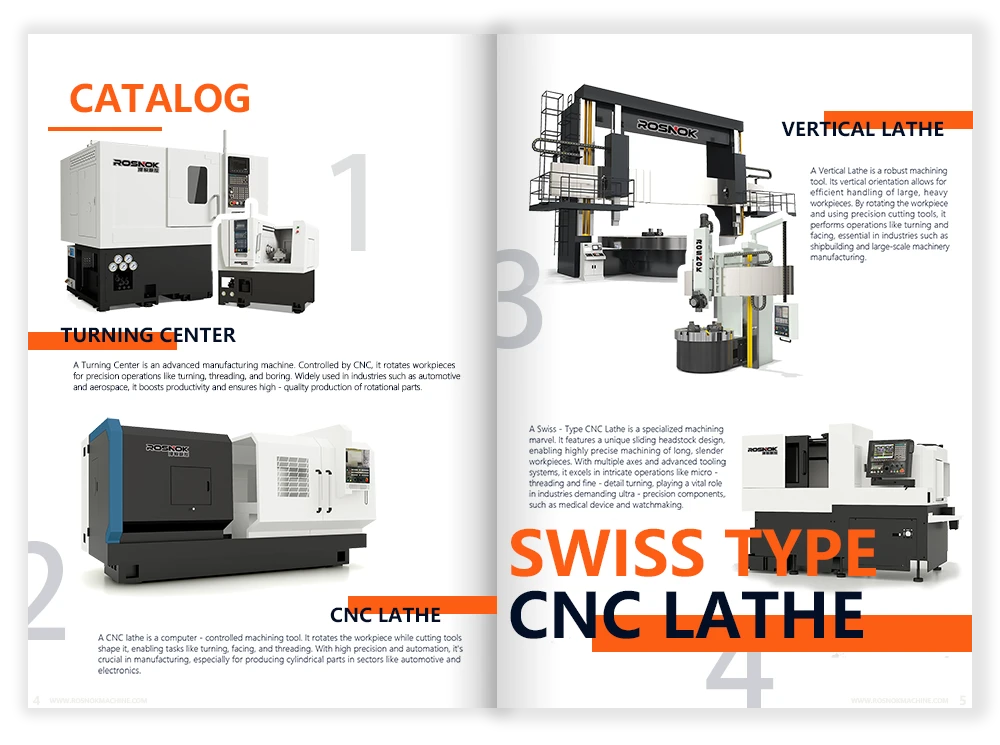
Applications of Engine Lathes
Engine lathes remain widely used across multiple sectors thanks to their versatility, mechanical transparency, and reliable performance in low- to medium-volume production. As a general-purpose machine tool, the engine lathe bridges the gap between manual craftsmanship and industrial productivity—especially where adaptability and control are valued over automation.
Automotive and Aerospace
In the automotive and aerospace sectors, precision turning is critical for manufacturing high-performance components. Engine lathes are frequently used to machine engine shafts, threaded bushings, bearing housings, and gear blanks. These parts require strict concentricity, dimensional tolerance, and surface finish—attributes the engine lathe can consistently deliver when operated correctly. Its ability to handle varied part geometries, coupled with low vibration and high rigidity, makes it a dependable tool even in industries dominated by CNC. In prototyping or maintenance tasks, where speed and operator judgment are key, engine lathes are often the preferred solution.
Repair Shops and Tool Rooms
For general repair work and toolroom tasks, no machine is more flexible than the engine lathe. It supports a wide range of machining operations in a compact footprint, making it ideal for settings where space and multitasking capabilities are both critical. From shaft re-machining and bearing seat rework to the production of jigs, fixtures, and short-run tooling, engine lathes perform reliably without the need for complex setup. Their manual control also allows for real-time decision-making during repairs, which is essential in unstructured or time-sensitive tasks.
Training and Education
Engine lathes are the cornerstone of machining education. Most vocational schools, technical colleges, and industrial training centers rely on them as the entry point for teaching fundamental machining principles. Because every part of the machine is visible and operated by hand, students gain an intuitive understanding of spindle speed, tool angles, feed rates, and workholding methods. This hands-on exposure builds a strong foundation for transitioning to CNC lathes later on. An engine lathe not only teaches mechanics—it instills respect for precision and control, core values in any machining discipline.
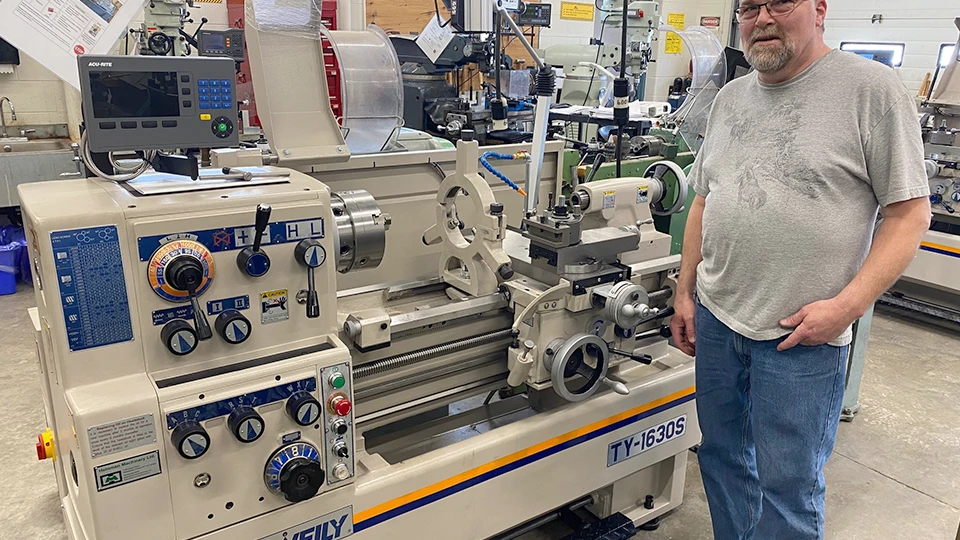
Engine Lathes vs. Other Lathe Types
Engine lathes are often misunderstood due to the wide variety of lathes in the machining world. To appreciate where engine lathes stand, we need to compare them with other common lathe types—especially CNC lathes, bench lathes, and toolroom lathes. Each of these machines serves different purposes, skill levels, and production needs.
Engine Lathe vs. CNC Lathe
At the core of this comparison is the difference between manual control and computer automation. An engine lathe is operated entirely by hand—spindle speed, feed rate, and tool position are all adjusted in real-time by the machinist. In contrast, a CNC lathe executes pre-programmed instructions using servo motors and digital controllers. This makes CNC machines highly efficient for mass production, offering consistency and speed in repetitive tasks.
However, the engine lathe has unique advantages—especially for beginners. It teaches the physical logic of turning: the relationship between feed, depth of cut, and spindle speed. It also fosters a strong sense of machine behavior and craftsmanship, which are often hidden behind the automation layer in CNC environments. In fact, many CNC programmers and operators begin their training on engine lathes to build a foundational understanding of machining processes. While CNC is indispensable for high-volume manufacturing, engine lathes remain irreplaceable for learning, prototyping, and repair work that requires tactile feedback and real-time adjustments.
Engine Lathe vs. Bench Lathe and Toolroom Lathe
The terms “engine lathe,” “bench lathe,” and “toolroom lathe” are sometimes used interchangeably, but they refer to machines with distinct characteristics and use cases.
A bench lathe is typically smaller and lighter, designed to sit on a workbench rather than a standalone floor base. It’s suited for very light-duty operations and hobbyist applications. While it shares the basic structure of an engine lathe, it lacks the size, rigidity, and often the power feed systems needed for industrial tasks.
A toolroom lathe, on the other hand, is essentially a premium-grade engine lathe—engineered with higher precision, tighter tolerances, and often more advanced features such as variable-speed drives, high-precision leadscrews, and enhanced spindle bearings. These machines are used in tool-and-die making, R&D labs, and applications where precision and repeatability are paramount.
The engine lathe sits in the middle: more robust and capable than a bench lathe, but more accessible and versatile than a specialized toolroom lathe. It is the “general-purpose workhorse” of manual turning—widely trusted in shops that require adaptability, ease of maintenance, and hands-on machining without the cost of high-end features.
Advantages of Using an Engine Lathe
Despite the rise of automation in modern manufacturing, the engine lathe continues to offer irreplaceable value through its mechanical reliability, straightforward operation, and broad adaptability. Its key advantages lie not only in its range of machining capabilities but also in its ability to balance precision, usability, and cost-efficiency.
Precision and Repeatability
The engine lathe achieves precision not through digital sensors or software, but through mechanical rigidity and skilled manual control. A rigid bed, smooth-sliding components, and carefully calibrated handwheels enable accurate and consistent machining. Once properly set up, the lathe can repeat cuts with minimal variation, making it well-suited for tasks that require dependable dimensional accuracy. For applications like toolmaking, maintenance, or low-volume part production, this repeatability is one of the engine lathe’s strongest assets.
Versatility and Ease of Use
Few machines match the versatility of a traditional engine lathe. It handles turning, facing, boring, drilling, threading, and more—all within one compact frame. With interchangeable tools, adjustable tailstocks, and intuitive controls, operators can quickly switch between tasks without reprogramming or reconfiguring. This flexibility is ideal for shops that handle a wide range of part types, materials, and batch sizes. The learning curve is also more approachable, making the engine lathe a go-to platform in both industrial settings and technical training programs.
Cost-Effectiveness in Manual Machining
Engine lathes are an economical choice for metalworking shops that value low upfront investment and long-term reliability. Unlike CNC machines, they don’t require complex programming systems or specialized personnel. Maintenance is simple, downtime is minimal, and most mechanical issues can be fixed with basic tools and parts. These factors make the engine lathe a cost-effective solution for workshops, especially in environments focused on small-batch production, repair work, or hands-on learning.
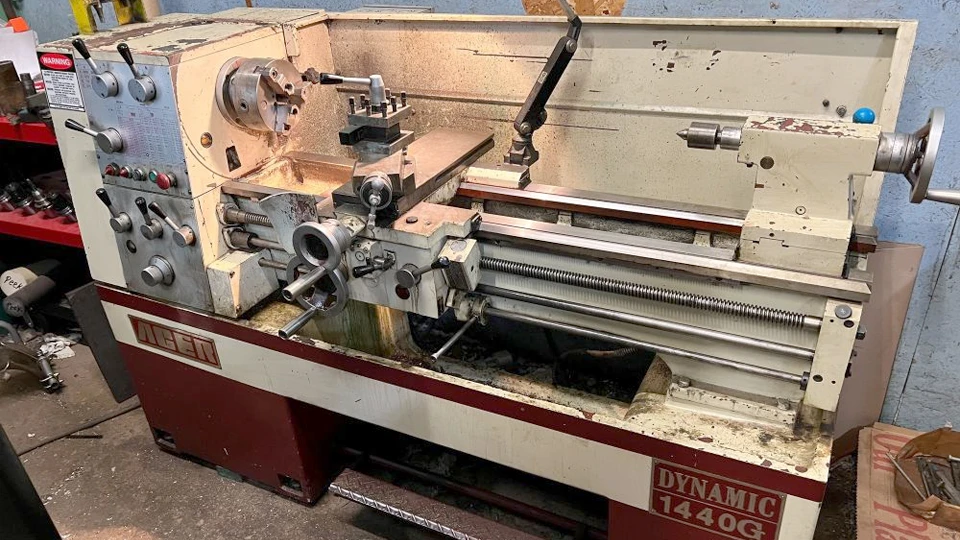
Choosing the Right Engine Lathe
Selecting the right engine lathe for your workshop depends on understanding your machining needs and matching them with the machine’s technical specifications. Whether you’re focused on general-purpose work, custom repair jobs, or educational training, careful attention to size, power, and support options can make all the difference in long-term performance and productivity.
Key Specs: Swing, Distance Between Centers, Spindle Bore
The most fundamental specifications of any engine lathe include swing, distance between centers, and spindle bore. These parameters directly determine the size of the parts you can machine.
- Swing refers to the maximum diameter that can be turned over the bed. A lathe with a 16″ swing can handle workpieces up to 8″ in radius.
- Distance between centers defines the maximum workpiece length the lathe can accommodate, crucial for turning shafts, rollers, or cylindrical rods.
- Spindle bore determines the largest bar stock that can pass through the headstock, which is important when feeding long materials.
If you choose a lathe with too small a swing or bore, you’ll be forced to outsource jobs or upgrade prematurely. These numbers aren’t just technical—they define your machine’s capabilities on day one and into the future.
Motor Power, Feed Rates, and Speed Control
The performance of an engine lathe is heavily influenced by its motor size and drive system. Higher motor power translates to greater torque, which is essential for cutting tough metals like stainless steel or performing heavy roughing operations.
Feed rate flexibility allows you to control the speed at which the tool advances along the material. For fine-finishing tasks, slow and stable feeds are crucial, while faster feeds improve productivity in rough machining. Variable speed controls or multi-step gearboxes allow the operator to optimize spindle RPM for different materials, tool types, and surface finish requirements.
Understanding these features not only ensures better surface quality but also improves cutting tool life and reduces wear on machine components—key considerations for long-term operational efficiency.
Brand, After-Sales, and Spare Parts
Beyond specs, the brand you choose plays a critical role in machine uptime and support. Engine lathes are long-term investments, and access to spare parts, technical documentation, and responsive customer service can significantly impact your production continuity.
At Rosnok, we pride ourselves on providing full-spectrum support, including spare part availability, setup guidance, and responsive after-sales service. Our engine lathes are built with quality Japanese and Taiwanese components, ensuring long life and consistent performance. We also maintain a large inventory of consumables and replacement parts for fast delivery to customers across Russia, Europe, South America, and Asia.
For customers seeking a one-stop solution backed by real industry expertise, Rosnok remains a trusted partner in manual and precision machining.

Maintenance and Safety Tips for Engine Lathes
Engine lathes are known for their durability, but consistent performance depends on regular maintenance and proper safety procedures. Whether you’re a student, operator, or shop owner, following these guidelines ensures that your machine stays reliable and your workspace stays safe.
Routine Maintenance Checklist
Keeping your engine lathe in top working condition requires a structured daily and weekly maintenance plan. Routine care not only prolongs machine life but also ensures machining accuracy and operator safety. Here are the essential steps:
- Lubrication: Check and replenish oil in the headstock, carriage, and lead screw reservoirs as recommended by the manufacturer. Use proper lubricants for sliding surfaces and gears.
- Tightness Checks: Inspect bolts, belts, tool posts, and chuck mounts to ensure nothing has loosened from vibration.
- Way Cleaning: Wipe down guideways after each shift to remove swarf, coolant residue, and dust that can damage precision surfaces.
- Chip Management: Clear chips from the bed, apron, and leadscrew threads to avoid jamming or scraping.
- Spindle Inspection: Check for abnormal heat or vibration while the machine runs, which may indicate misalignment or bearing wear.
- Tailstock Alignment: Periodically verify that the tailstock remains properly centered using a dial indicator, especially when switching between long and short parts.
By integrating this checklist into your standard operating procedure, you can prevent breakdowns and minimize production downtime.
Common Mistakes to Avoid
Many of the most frequent accidents or malfunctions on an engine lathe stem from avoidable operator errors—particularly among beginners. Here are key pitfalls to watch for:
- Excessive Feed or Speed: Running the lathe too fast for the material or too deep on the first pass can lead to tool chatter, part deflection, or even machine damage.
- Improper Centering: Failing to properly secure and align the workpiece results in off-center machining, poor surface finish, and vibration issues.
- Loose Tooling: A poorly clamped tool post or incorrectly set tool height can cause the tool to shift during cutting, compromising accuracy and posing a safety risk.
- Neglecting Chuck Key Removal: Leaving the chuck key in place is extremely dangerous—always remove it immediately after tightening.
- Forgetting to Engage Feed Controls Properly: Incorrect use of feed rod vs. lead screw modes can cause the machine to move in unintended ways.
Training and attention to detail are essential to avoid these missteps. A careful operator is a safe operator.
Safety Best Practices
Machine safety isn’t just about compliance—it’s about building a culture of vigilance and preparation. Implementing the following habits can dramatically reduce accident risk:
- Always Wear PPE: Safety glasses, hearing protection, and close-fitting clothing are essential. Avoid gloves when operating rotating machinery.
- Clear the Area: Keep the lathe’s working area free of obstructions, loose tools, and unnecessary materials. Clean up oil spills immediately to prevent slips.
- Know Your Emergency Stops: Familiarize yourself with all emergency stop buttons and switches. Check that they function before operating the lathe.
- Use Guards and Shields: Never remove or bypass machine guards designed to protect the operator.
- Train Before You Operate: New users should be supervised by an experienced technician and trained in both machine setup and safe operation before independent use.
A well-maintained machine combined with disciplined safety practices is the foundation of a productive and injury-free shop. These simple routines can make a world of difference in both equipment longevity and workplace wellbeing.
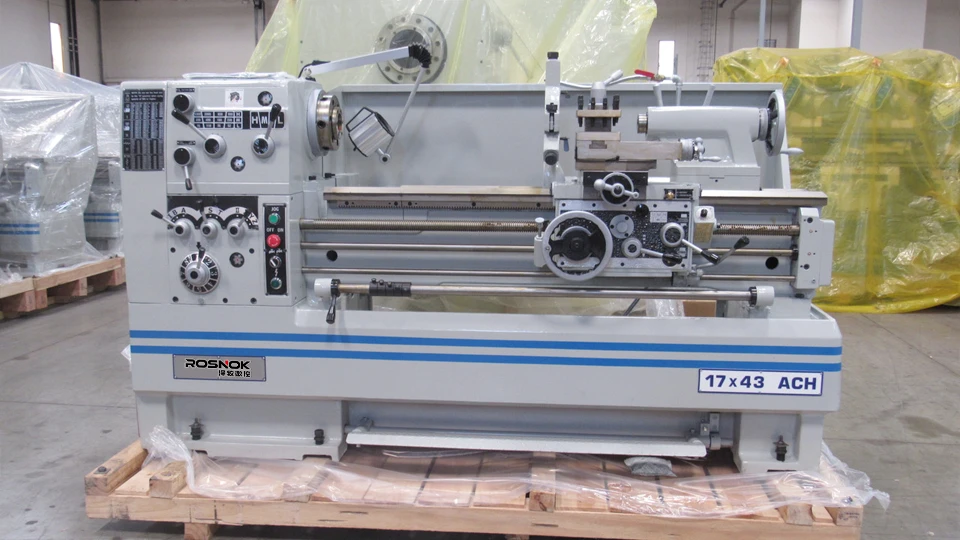
Conclusion
Engine lathes represent both the historical foundation and the modern entry point of precision metalworking. Throughout this guide, we’ve explored what defines an engine lathe—from its manually controlled turning functions to its industrial origins during the age of mechanical innovation. We’ve broken down its core components like the bed, headstock, and lead screw, explained how these machines operate through coordinated spindle rotation and tool feed, and detailed the key machining processes they perform. We also examined their role across industries—from automotive to education—while comparing them to CNC and other lathe types. Finally, we discussed how to evaluate, maintain, and safely operate an engine lathe, reinforcing why it remains essential for both skilled machinists and those just beginning their journey into metal cutting.
For manufacturers seeking dependable turning solutions, choosing the right supplier is just as important as selecting the right machine. Rosnok, a well-established provider of CNC lathes and machining centers, offers a full range of equipment—from traditional engine lathes to advanced automated systems. With strong manufacturing capabilities, international certifications, and reliable after-sales support, Rosnok has become a trusted partner for workshops, training institutes, and industrial facilities across Russia, Europe, Asia, and South America.

